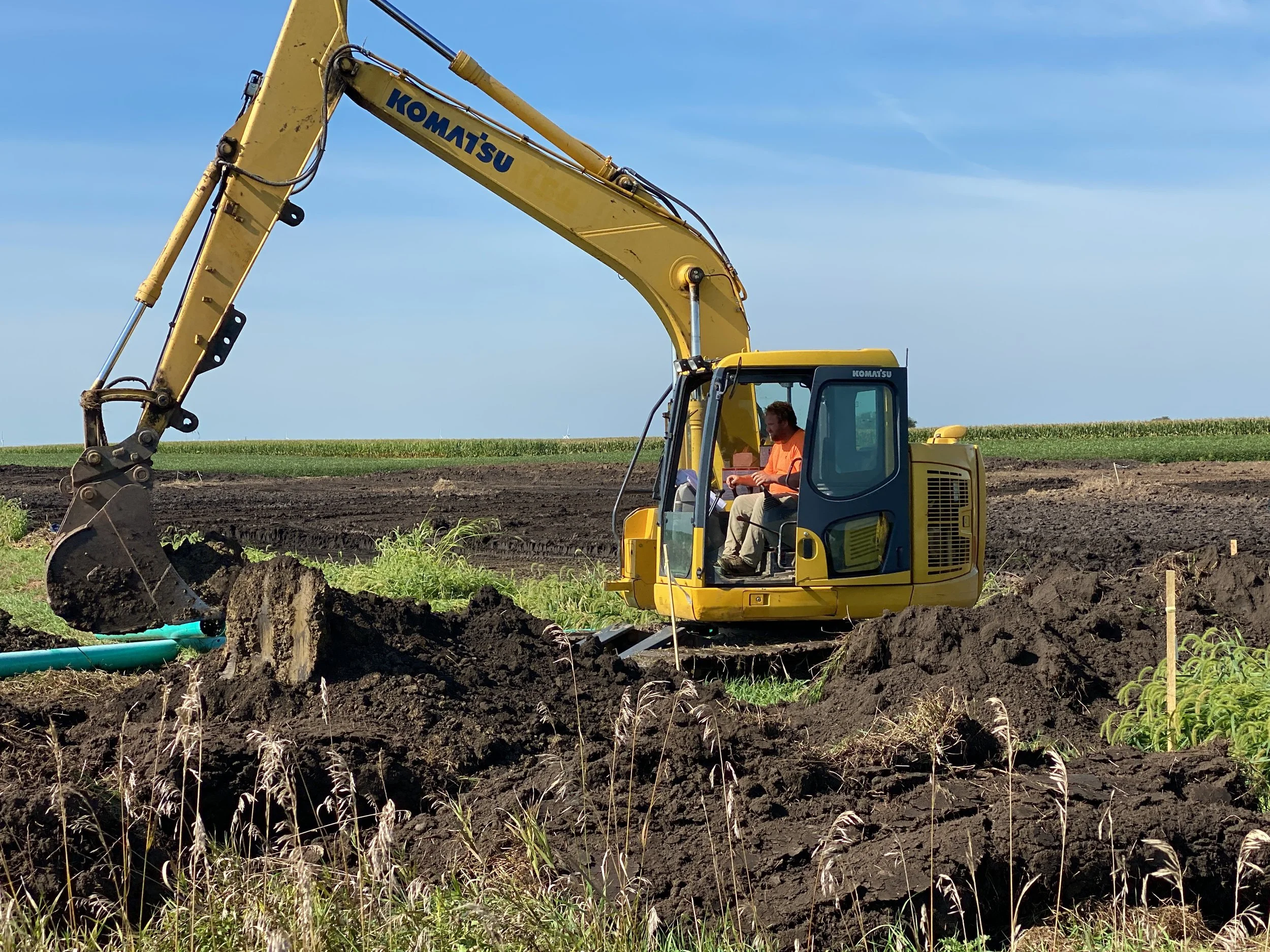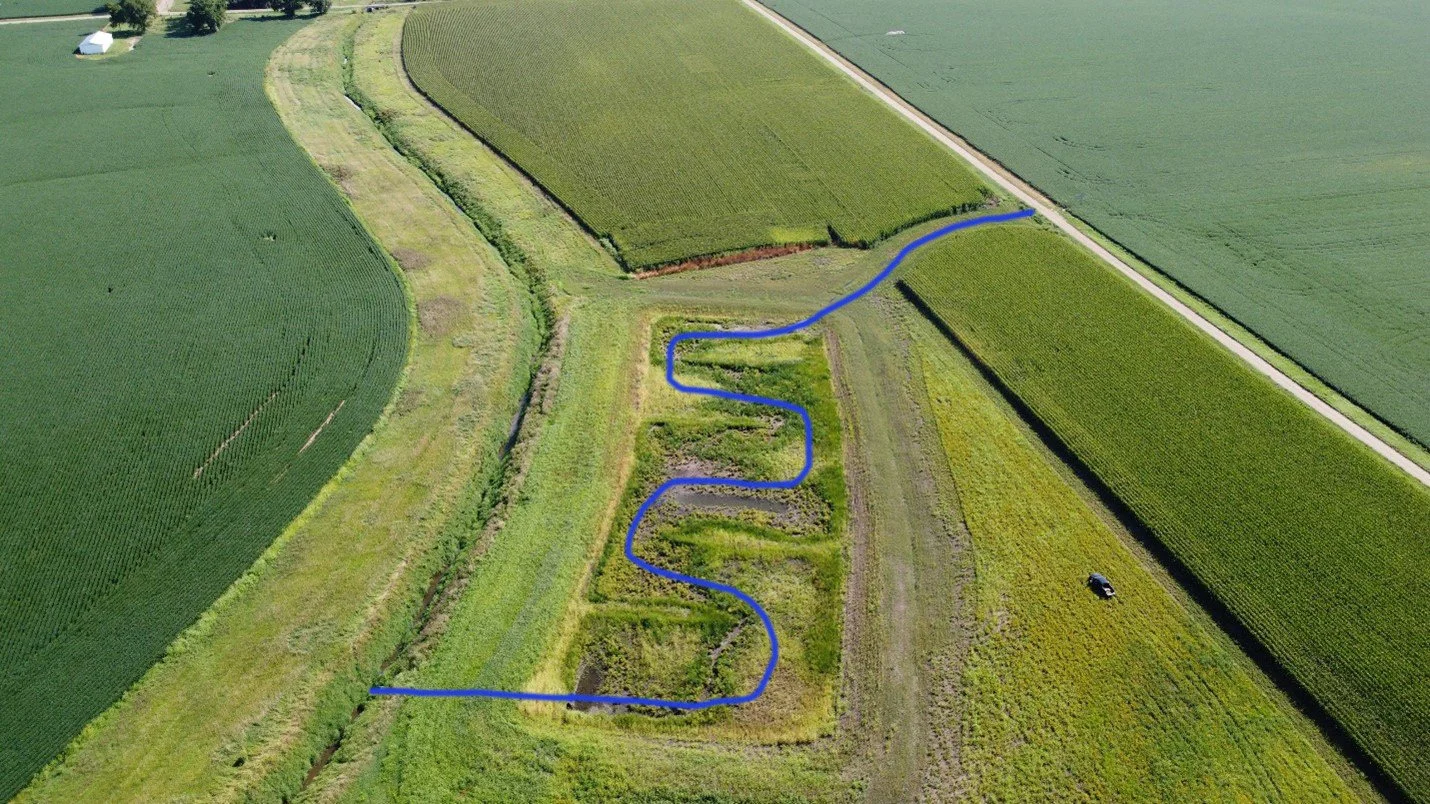Without enough nitrogen, plants cannot survive or thrive. In the Upper Midwest of the United States, nitrogen management is one of the most important decisions a farmer makes each crop season. But like many things, too much is not a good thing. This is especially true when excess nitrogen flows into downstream water bodies. This overabundance of nutrients (called eutrophication) creates low-oxygen or hypoxic zones like the one that forms in the Gulf of Mexico every year at the mouth of the Mississippi River.
This Gulf of Mexico “dead zone” is why the Illinois Nutrient Loss Reduction Strategy was created, at the behest of the U.S. Environmental Protection Agency (EPA). The primary source of the extra nitrogen feeding into the Mississippi River is row-crop production in the Upper Mississippi River Basin.
In the first few thousand years of farming, nutrients were primarily introduced into the ground from the previous crop’s excess plant material or from the waste of humans and/or animals that were living where the crop was produced. As urbanization increased globally in the mid-19th century, more of the crop was sold to feed people in ever-growing cities. A deficit started to develop on the cropland since some of the nutrients in the food were now flowing into urban sewer systems, making it necessary to add fertilizer to farm fields to maintain productivity.
Nitrogen management changed even more in the mid-to late 20th century when greater agricultural mechanization, increasing global demand for food, and technology created relatively cheap artificial fertilizers. However, two other factors supported the increased movement of nitrogen off cropland.
Agricultural drain tile being installed on a farm in Marshall County in September 2021.
First, large, refrigerated ocean-going vessels allow the export of significant quantities of plant and animal products from the U.S. to other countries. The other is the use of agricultural tile drainage. A tile drainage system uses pipes (clay or flexible perforated plastic) buried under cropland to rapidly remove excess water from the soil to increase crop production. These pipes carry the excess water to nearby creeks and rivers. The naturally occurring nitrogen in the soil and the artificial nitrogen added by the farmer each year moves through the soil and into the water drained from the field.
Thus, the excess nitrogen from Illinois cropland flows into Illinois waterways and then to the Mississippi River contributing to the formation of a dead zone each year.
This nitrogen runoff is unintended. Illinois farmers (and their peers in other states in the Upper Mississippi River Basin) didn’t set out to pollute local creeks and rivers with excess nitrogen. However, they must be part of the solution to the problem, and they are using various methods to reduce the amount of nitrogen leaving their fields.
Some landowners are trying to reduce nitrogen loss from their land by retiring row-crop acres that require large amounts of nitrogen to produce even a small crop. Others are changing how much nitrogen they apply and when they apply it. More are growing cover crops to hold nitrogen in the field during the off-season or using products to reduce the likelihood that the nitrogen applied leaves the field.
This Smart Wetland was built to intercept agricultural tile drainage water from the field to the right of the gravel road. As the blue line indicates, the water from the tile enters the wetland at the upper right and meanders through the wetland. As it moves through the wetland, naturally occurring processes break down the nitrogen into a harmless gas. The water leaves the wetland at the lower left and flows into the nearby creek with less nitrogen than it carried from the nearby field.
In addition, there are farmers who are using what are known as edge-of-field practices (photo of wetland). These conservation practices feature different types of structures that are built to slow down ag tile drainage water and move it slowly through wood chips (bioreactors), soil (saturated buffers), or water and plants (constructed wetlands) to remove excess nitrogen before it flows into a stream or creek. As you might imagine, we are big supporters of the constructed wetland concept called Smart Wetlands
A Smart Wetland may be right for your Illinois cropland. If you farm or own farmland that is tile-drained or has a tile drainage system running through it and would like to have our team evaluate your property, please complete this form, and we will be in touch.
Jean McGuire is the Field Outreach Specialist for our program and the face of TWI in the counties where we work. She works with our partners to identify landowners who may have an interest in building a Smart Wetland on their property. She and her siblings co-owns the farm she grew up on.
The Mississippi River Network provided support for developing this blog. Consider becoming a River Citizen to help “clean up and protect our country's greatest River.”


